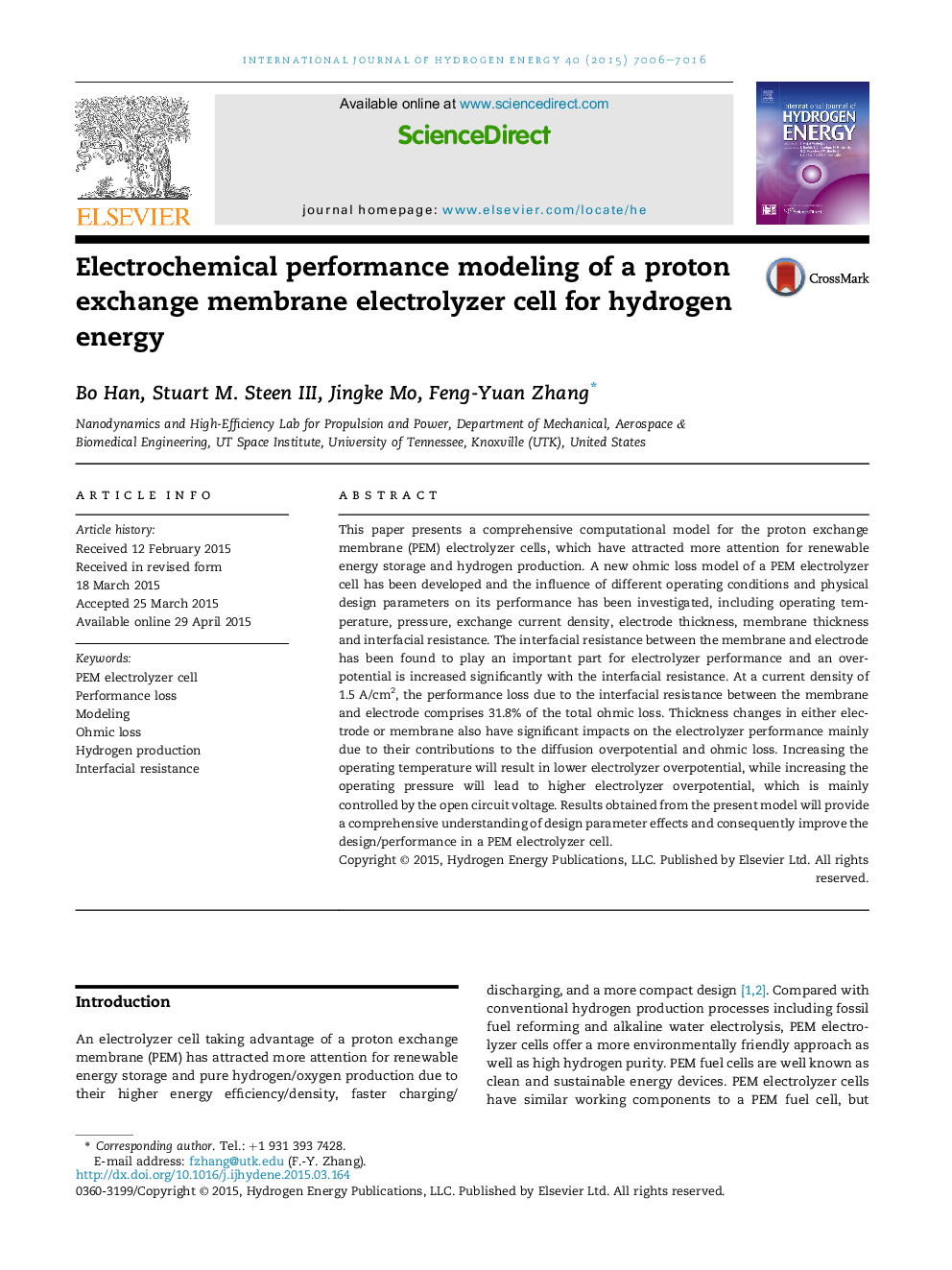| Article ID | Journal | Published Year | Pages | File Type |
|---|---|---|---|---|
| 1279884 | International Journal of Hydrogen Energy | 2015 | 11 Pages |
•A comprehensive mathematical model of PEM electrolyzer cells is developed.•A new ohmic loss analysis at a given electrode porosity is presented.•Effects of different operating conditions and design parameters are investigated.•The interfacial resistance plays an important part for cell performance.•Thinner gas diffusion layers lead to better cell performance.
This paper presents a comprehensive computational model for the proton exchange membrane (PEM) electrolyzer cells, which have attracted more attention for renewable energy storage and hydrogen production. A new ohmic loss model of a PEM electrolyzer cell has been developed and the influence of different operating conditions and physical design parameters on its performance has been investigated, including operating temperature, pressure, exchange current density, electrode thickness, membrane thickness and interfacial resistance. The interfacial resistance between the membrane and electrode has been found to play an important part for electrolyzer performance and an overpotential is increased significantly with the interfacial resistance. At a current density of 1.5 A/cm2, the performance loss due to the interfacial resistance between the membrane and electrode comprises 31.8% of the total ohmic loss. Thickness changes in either electrode or membrane also have significant impacts on the electrolyzer performance mainly due to their contributions to the diffusion overpotential and ohmic loss. Increasing the operating temperature will result in lower electrolyzer overpotential, while increasing the operating pressure will lead to higher electrolyzer overpotential, which is mainly controlled by the open circuit voltage. Results obtained from the present model will provide a comprehensive understanding of design parameter effects and consequently improve the design/performance in a PEM electrolyzer cell.
